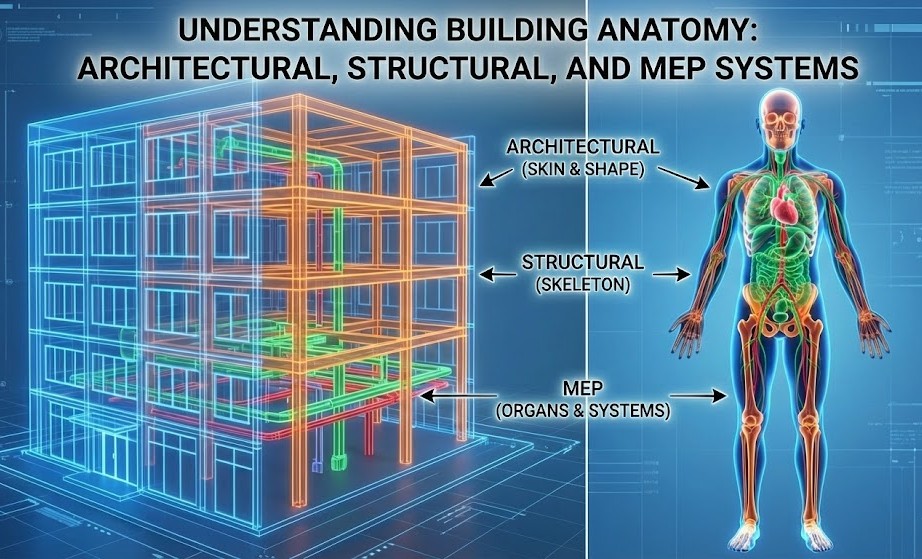
Author: Devika R
July 28, 2025
7 min read
In the rapidly evolving world of construction, architecture, and engineering, staying ahead of the curve is not just an advantage; it’s a necessity. In 2025, one software tool is standing out as a game-changer for civil and architectural students: Revit. As the construction industry embraces digital transformation through Building Information Modeling (BIM), mastering Revit has become not just a skill but a strategic career move.
If you’re a civil or architectural student wondering where to invest your time and energy, here’s why learning Revit in 2025 could be the smartest decision you’ll make for your career.
What is Revit?

Revit, developed by Autodesk, is a powerful BIM software widely used in the architecture, engineering, and construction (AEC) industries. Unlike traditional CAD software that focuses on creating 2D drawings, Revit enables professionals to create intelligent 3D models that carry comprehensive data about every element of a structure, from walls and doors to electrical and plumbing systems.
Revit’s parametric modeling capabilities allow for dynamic changes: if one element is altered, all associated components update automatically. This level of precision and coordination reduces errors, streamlines workflows, and fosters collaboration among diverse teams working on complex projects.
The Rise of BIM in 2025: A New Industry Standard

The AEC sector is undergoing a digital transformation, and BIM is at the heart of this revolution. Governments, especially in developed countries, have mandated BIM for public infrastructure projects. Private sector companies are also adopting it to enhance efficiency, reduce costs, and mitigate project risks.
With the global BIM market projected to grow significantly by 2025, Revit skills are increasingly becoming a core requirement for civil engineers, architects, structural designers, and MEP professionals. Proficiency in Revit opens the door to BIM-integrated workflows, offering students a competitive advantage in both domestic and international job markets.
Why Civil & Architectural Students Must Learn Revit
1. Industry-Relevant Skillset
Employers are actively seeking candidates with practical Revit expertise. For civil and architectural students, learning Revit bridges the gap between academic knowledge and industry requirements. It equips them with hands-on experience in modeling, documentation, and coordination that’s directly applicable in real-world projects.
2. Enhanced Employability
In today’s competitive job market, having Revit on your resume makes you a more attractive candidate. Whether you aspire to join architectural firms, construction companies, or infrastructure giants, Revit skills can set you apart from peers who are only familiar with traditional design methods.
3. Integrated Design & Collaboration
Modern construction projects involve multi-disciplinary teams. Revit’s collaborative environment allows architects, civil engineers, structural designers, and MEP specialists to work on the same model simultaneously. Understanding this collaborative workflow is essential for students who want to thrive in team-based project settings.
4. Future-Proofing Your Career
As the AEC industry continues to evolve with technologies like AI, machine learning, and digital twins, Revit’s role in digital construction will only grow. Learning Revit today ensures that students are prepared for future innovations and job roles that demand BIM proficiency.
5. Opportunities in Diverse Roles
Revit expertise opens up diverse career pathways, such as:
- BIM Coordinator
- BIM Modeler
- Architectural Designer
- Structural Engineer
- MEP Engineer
- Project Manager
Additionally, proficiency in Revit can serve as a foundation for mastering other BIM tools like Navisworks, Dynamo (for computational design), and Enscape (for visualization).
Key Features of Revit That Students Should Master
Parametric Components
Revit allows users to create intelligent building components that can be modified parametrically. Learning this skill helps students design efficiently without starting from scratch every time.
Worksharing
Revit’s worksharing feature enables multiple team members to work on the same project file, fostering real-time collaboration. This is a critical skill in professional environments where teamwork is paramount.
Family Creation
Students can learn to create custom families in Revit, enabling more tailored designs that meet specific project needs.
Scheduling & Documentation
Revit automates the creation of schedules and construction documentation, saving time and reducing human error. Knowing how to generate these deliverables efficiently is a valuable skill for any budding professional.
Visualization & Rendering
With tools like Revit’s built-in rendering engine or third-party integrations like Lumion and Enscape, students can create high-quality visualizations and walkthroughs. This is crucial for presentations and client approvals.
Real-World Applications of Revit for Civil & Architectural Students
Infrastructure Projects

Civil engineering students can use Revit for designing roads, bridges, and tunnels. The software aids in visualizing infrastructure in 3D, ensuring design accuracy and compliance with regulations.
Residential & Commercial Buildings
For architectural students, Revit is indispensable in designing residential complexes, office spaces, and commercial buildings. From conceptual design to detailed construction drawings, Revit streamlines the entire workflow.
Heritage & Restoration Projects
Revit, combined with point cloud data, is increasingly used for documenting and restoring heritage structures, a growing field in architectural conservation.
Sustainability & Energy Analysis
Revit supports energy analysis and sustainability assessments, enabling students to design eco-friendly and energy-efficient buildings, skills that are highly sought after in the green building movement.
The ROI of Learning Revit

While there are upfront costs in learning Revit, such as course fees and software access, the return on investment is substantial. Revit-certified professionals often command higher salaries and have better job prospects compared to those without BIM skills.
Moreover, many companies offer internships and job opportunities specifically for candidates proficient in Revit, making it easier for students to transition from academic learning to professional practice.
How to Start Learning Revit — Your Journey Begins at BIM Cafe Learning Hub

If you’re ready to build a future in architecture, civil engineering, or BIM, BIM Café Learning Hub is the ideal place to start learning Revit. The expert-led, structured training is specifically designed for civil and architectural students aiming to master BIM workflows. At BIM Café Learning Hub, you gain hands-on experience through real-world projects that reflect industry standards and practices. This practical approach not only sharpens your Revit skills but also prepares you for roles like BIM Coordinator, Architectural Designer, or Structural Engineer. The program further equips you with the knowledge to pursue valuable credentials like Autodesk’s Revit Certification. With the right guidance from experienced mentors, you can confidently step into the BIM-driven job market and future-proof your career.
Final Thoughts
In 2025, the AEC industry will be more digital, collaborative, and data-driven than ever before. For civil and architectural students, learning Revit is not just about acquiring software skills; it’s about preparing for the future of construction and design. By mastering Revit, you position yourself at the forefront of industry trends, ready to tackle complex projects with confidence and competence.
If you’re looking for expert guidance and comprehensive training in Revit and BIM, BIM Cafe Learning Hub is the ideal place to start your journey towards becoming a future-ready professional.
Start your Revit journey today with expert-led courses at BIM Café Learning Hub and unlock your career potential in the AEC industry!





